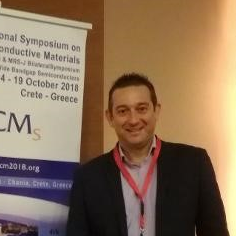Nanomaterials for Environmental and Solar Energy Applications
A special issue of Crystals (ISSN 2073-4352). This special issue belongs to the section "Materials for Energy Applications".
Deadline for manuscript submissions: 30 September 2024 | Viewed by 107
Special Issue Editors
Interests: nanometerials; nanometerial synthesis; material characterization; heterogeneous catalysis; photocatalysis; adsorption; solar cells
Interests: sputtering; thin films; materials characterization; gas sensors; thermochromic materials; hydrothermal synthesis
Special Issues, Collections and Topics in MDPI journals
Special Issue Information
Dear Colleagues,
Solar energy stands out as the most exciting form of green energy, occupying a significant share of the renewable energy landscape. In pursuit of maximizing its potential, researchers are turning their attention to developing high-performance nanomaterials to harness solar energy. The unique properties of nanomaterials at the nanoscale have turned this field into a fascinating and rapidly advancing area of study, showcasing diverse applications.
The utilization of nanomaterials promises to increase the efficiency, affordability, and environmental sustainability of solar energy technologies. This includes a wide range of applications, such as photocatalysis and solar cells, as well as energy storage and -saving technologies. Nanostructured materials have been thoroughly explored in various segments of solar energy applications, from lithium-ion batteries and electrochemical capacitors to solar cells, electrochromic devices, thermochromic coatings, electrocatalysts, and biofuel production. In addition, the application of nanomaterials extends beyond energy sectors, delving into environmental applications such as vehicle NOx emission control, nuclear waste management, electromagnetic absorption, and wastewater treatment.
Motivated by the imperative to address pressing global environmental challenges, this Special Issue aims to shed light on the complex relationship between nanomaterials, solar energy, and applications. We invite submissions to this Special Issue, entitled "Nanomaterials for Environmental and Solar Energy Applications", in the form of original research papers, reviews, or communications. Emphasis is placed on the exploration of the physicochemical properties of nanomaterials, serving as foundational knowledge for the development of efficient and sustainable materials with broad applications in energy and the environment.
Dr. Sofia Stefa
Dr. Emmanouil Gagaoudakis
Guest Editors
Manuscript Submission Information
Manuscripts should be submitted online at www.mdpi.com by registering and logging in to this website. Once you are registered, click here to go to the submission form. Manuscripts can be submitted until the deadline. All submissions that pass pre-check are peer-reviewed. Accepted papers will be published continuously in the journal (as soon as accepted) and will be listed together on the special issue website. Research articles, review articles as well as short communications are invited. For planned papers, a title and short abstract (about 100 words) can be sent to the Editorial Office for announcement on this website.
Submitted manuscripts should not have been published previously, nor be under consideration for publication elsewhere (except conference proceedings papers). All manuscripts are thoroughly refereed through a single-blind peer-review process. A guide for authors and other relevant information for submission of manuscripts is available on the Instructions for Authors page. Crystals is an international peer-reviewed open access monthly journal published by MDPI.
Please visit the Instructions for Authors page before submitting a manuscript. The Article Processing Charge (APC) for publication in this open access journal is 2600 CHF (Swiss Francs). Submitted papers should be well formatted and use good English. Authors may use MDPI's English editing service prior to publication or during author revisions.
Keywords
- nanomaterial synthesis
- physicochemical properties
- band gap energy tuning
- solar energy
- environmental remediation
- energy conversion
- photocatalysis
- thermochromic coatings
- solar cells
- batteries






